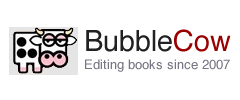 There are many methodologies and techniques for writing a novel. Perhaps one of the most respected and potentially useful is Randy Ingermanson’s Snowflake Method.
There are many methodologies and techniques for writing a novel. Perhaps one of the most respected and potentially useful is Randy Ingermanson’s Snowflake Method.
The founding concept behind Ingermanson’s thinking is that novels are designed. He suggests that if a writer recognises this fact and works to improve the design process, they will produce a better novel.
Ingermanson has constructed a 10 step process, which I have summarised below. This process is based around the idea that a writer begins with a simplistic Deep Theme and then, over time, develops and adds complexity. This makes the formation of the novel a conscious process, rather then a random creative exercise.
I am not saying that this is the ‘best’ method to write a novel. In fact, I feel many writers will be horrified at such detailed levels of planning. However, some writers will find an affinity with the Snowflake Method. If you are a writer that plans, this post might just change your writing life!
The Snowflake Method Ten Step Process
1. Write a one-sentence summary of your novel.
2. Expand the sentence to a paragraph describing the story narrative, any major events and the ending.
3. Now consider the main character and write a one page summary for each, considering the following points:
- A one-sentence summary of the character’s storyline.
- The character’s motivation (what does he/she want abstractly?).
- The character’s goal (what does he/she want concretely?).
- The character’s conflict (what prevents him/her from reaching this goal?).
- The character’s epiphany (what will he/she learn, how will he/she change?.
- A one-paragraph summary of the character’s storyline.
4. Go back to the summary you wrote in 2 and expand each sentence into a paragraph. Randy’s advice here is:
Take several hours and expand each sentence of your summary paragraph into a full paragraph. All but the last paragraph should end in a disaster. The final paragraph should tell how the book ends. Source
5. Write a one page description for each major character, which tells the story from their point of view.
6. Expand your one page plot synopsis into a four page plot synopsis.
7. Expand your character descriptions from 3 into full ‘character charts’.
8. Using the expanded synopsis, make a list of every scene you will need to write to complete the novel.
9. Using the scene list, write a multi-paragraph narrative description of each scene.
10. Write your first draft.
This post is a summary of Ingermanson’s thinking and ideas. I strongly suggest that if you wish to apply the Snowflake Method that you go to Randy Ingermanson’s website to find more details.

Pingback: Top Picks Thursday 10-20-2011 « The Author Chronicles
Pingback: Writing Tips: National Novel Writing Month and General Novel Writing Tips | Revolution Publishing
Pingback: Writing Tips For National Novel Writing Month « Tales From The PonyTails Barn
Pingback: Writing Advice: Snowflake Method « The Jet Fuel Review Blog
Pingback: Randy Ingermanson’s Snowflake Method | The Neophyte Writer
Pingback: Persist | J. Duncan Lick
Pingback: How to Write a Novel: Fifty Helpful Links to Recommended Articles « Good Writing Tips
Pingback: So You Want to Write a Novel « Riddell Creative
Pingback: What’s your method? « Sonya Johns
Pingback: Snowflake Method « Sonya Johns
Pingback: Revolution Publishing | Writing Tips: National Novel Writing Month and General Novel Writing Tips